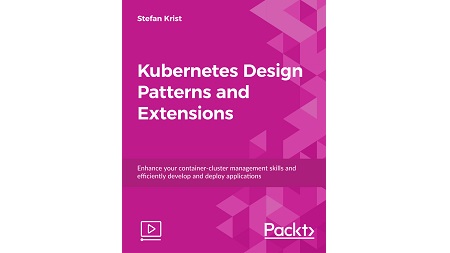
English | MP4 | AVC 1920×1080 | AAC 44KHz 2ch | 1h 47m | 511 MB
Enhance your container-cluster management skills and efficiently develop and deploy applications
Before plunging into how Kubernetes works, this course introduces you to the world of container orchestration and describes the recent changes in application development. You’ll understand problems that Kubernetes solves and get to grips with using Kubernetes resources to deploy applications. In addition to this, you’ll learn to apply the security model of Kubernetes clusters.
Kubernetes Design Patterns and Extensions describes how services running in Kubernetes can leverage the platform’s security features. Once you’ve grasped all this, you’ll explore how to troubleshoot Kubernetes clusters and debug Kubernetes applications. You also discover how to analyze the networking model and its alternatives in Kubernetes and apply best practices with design patterns.
By the end of this course, you’ll have studied all about using the power of Kubernetes for managing your containers.
What You Will Learn
- Understand and classify software designs as per the cloud-native paradigm
- Apply best practices in Kubernetes with design patterns
- Set up Kubernetes clusters in managed and unmanaged environments
- Explore Kubernetes extension points
- Extend Kubernetes with custom resources and controllers
- Integrate dynamic admission controllers
- Develop and run custom schedulers in Kubernetes
- Analyze networking models in Kubernetes
Table of Contents
01 Course Overview
02 Lesson Introduction
03 Software Design Patterns
04 Kubernetes Design Patterns – Part 1
05 Kubernetes Design Patterns – Part 2
06 Strategies – Part 1
07 Strategies – Part 2
08 Summary
09 Lesson Overview
10 Accessing the Kubernetes API – Part 1
11 Accessing the Kubernetes API – Part 2
12 Accessing the Kubernetes API – Part 3
13 Official Client Libraries – Part 1
14 Official Client Libraries – Part 2
15 Official Client Libraries – Part 3
16 Official Client Libraries – Part 4
17 Community Maintained Client Libraries
18 Summary
19 Lesson Introduction
20 Kubernetes Extension Points
21 Extending Kubernetes Clients
22 Extending the Kubernetes API
23 Kubernetes Operator
24 Kubernetes Dynamic Admission Controller
25 Extending the Kubernetes Scheduler Basics
26 Extending the Kubernetes Scheduler Complex
27 Extending Kubernetes Infrastructure
28 Summary
Resolve the captcha to access the links!